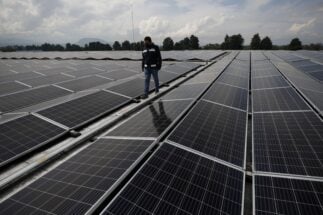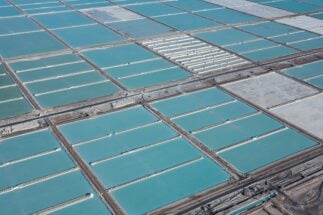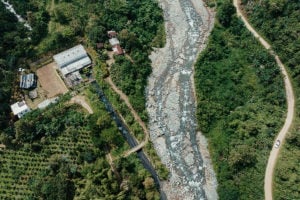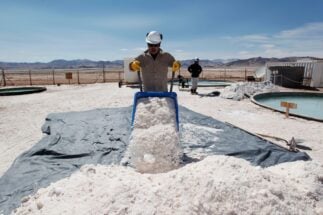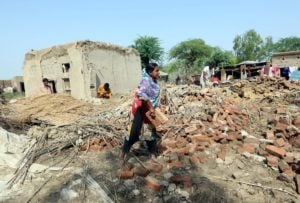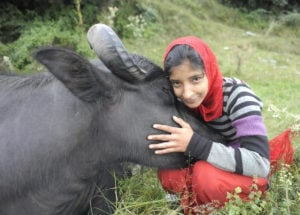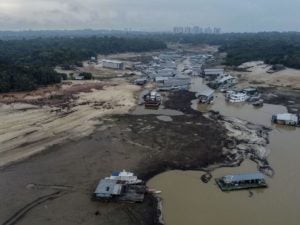Andrea Calcina has lived all of her 58 years in the community of Calcha K, a group of adobe houses at 3,800 metres above sea level in the Bolivian Andes. Though everything seems to be drying up quickly here, Calcina points to a water well that is still providing for residents, if not like it used to.
“There used to be more. With this water we wash, we sow, we water vegetables and quinoa,” says Andrea, who lives in a community of 100 families, where recurring complaints that “it doesn’t rain like it used to” are heard. Calcha K, in the southwestern department of Potosí, is one of 46 communities settled around the Uyuni and Pastos Grandes salt flats, two of the country’s three major lithium reserves. The third, Salar de Coipasa, is found in Oruro, in the west of the country.
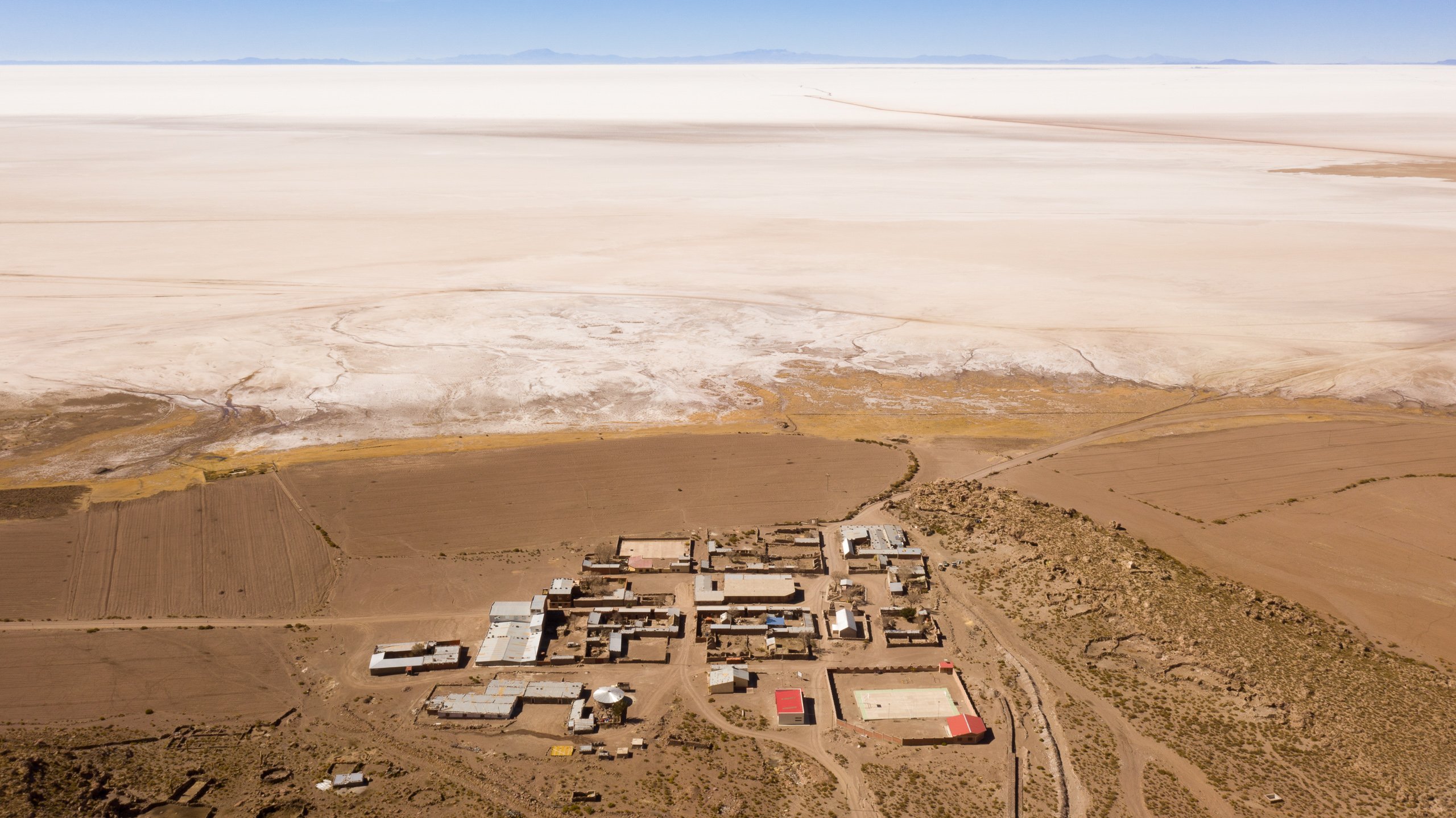
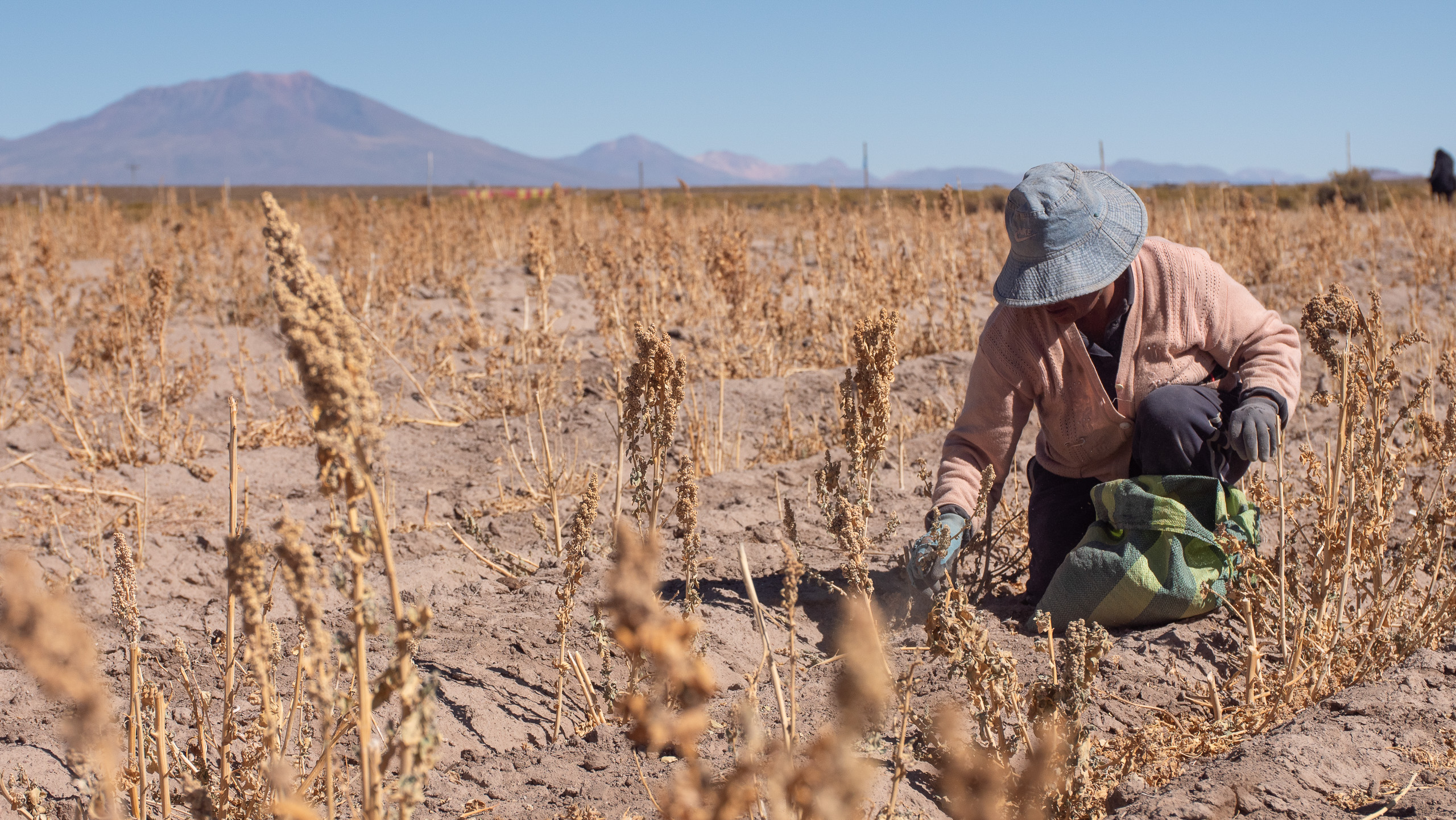
This year, the Bolivian government has announced a series of agreements to build lithium industrial complexes in this area: a consortium comprised of the Russian Uranium One Group and Chinese company CITIC Guoan will build plants at Pastos Grandes and Uyuni, while CATL, also from China, will build another plant at Uyuni and in Coipasa.
Public talks over the projects have been held periodically in the nearby areas, organised by state-owed lithium company Yacimientos de Litio Bolivianos (YLB) – a partner in these agreements – as a way of seeking communities’ approval. But some who have attended do not feel these could be classed as a true “consultation”, a right established by the International Labour Organization (ILO).
In these talks, officials have explained the benefits that Bolivia will obtain once it has an operational industry to produce lithium carbonate – the precursor to lithium-ion batteries, and the lithium product with the highest volume of international trade. Aquilina Mamani, the former leader of a nearby community called Aguaquiza, says that the explanations at these talks have been technical, so very few people understand what is being explained. They also speak to the audience in Spanish, when many people only understand Quechua, their native language.
Though lithium production has long held promise for the South American country, the issue picked up in the last week of June, when President Luis Arce confirmed the signing of these new agreements, which will see a total of US$2.8 billion of foreign investment to industrialise the metal. The announcement did not go down well in the area around the salt flats.
“The fear is for the water,” says Marcial Muraña Ramos, the cacique justiciero – equivalent to a local justice minister – of Mallku Villamar, a community near the Pastos Grandes salt flat. It is perhaps a justified fear of a water-intensive activity whose promise for lithium-rich Latin American countries has so far been accompanied by doubts over its possible impacts.
The state of South American lithium
According to a study by the Latin American Council of Social Sciences (Clacso), Chile, Argentina and Bolivia account for 68% of global lithium reserves, in the form of brines, deposits with the highest concentration of the metal, found within the so-called “lithium triangle” that spans their Andean borders. However, each country’s pursuit of extraction is proceeding at a different pace.
Chile has been producing lithium since 1984, reaching a total output of 39,000 tonnes in 2022, while Argentina has been doing so since 1997, producing 6,200 tonnes in 2022. Bolivia, however, has long struggled to get its extraction off the ground, though the government says it will be able to produce 100,000 tonnes per year by 2025, when its planned carbonate plants begin operation.
Argentina, meanwhile, has five projects in various advanced stages of construction, which would be added to the three already in operation, all located in the country’s north-west: Salar de Hombre Muerto in Catamarca province, and the Salar de Olaroz and Salar de Cauchari-Olaroz in Jujuy province.
Chile, the world’s second-largest lithium producer after Australia, has two operations in the Salar de Atacama, in the northern region of Antofagasta. Exploration is already underway in the Salar Cuenca Francisco in the Atacama region, also in the north, and there are plans to produce lithium carbonate in the Salar de Maricunga, also in Atacama.
Bolivia planned to inaugurate its first industrial lithium carbonate plant in August this year – 15 years after its construction began. However, this did not materialise, and the month was instead marked by political troubles for YLB, as the country’s hydrocarbons minister, Franklin Molina, removed and replaced the state lithium company’s president.
Though this year has seen the country sign the agreements to build four plants, their timelines and conditions are unclear as the documents were not made public – and not even members of congress had access to them, the press team of Senator Cecilia Requena, of the Land and Territory, Natural Resources and the Environment Commission, told Diálogo Chino.
With relatively small, as yet unexploited deposits located beyond the northern extremity of the lithium triangle, Peru is a minor player and newcomer in the lithium arena. In May, however, the country approved the exploration of the Falchani lithium project in the south-eastern region of Puno by Macusani Yellowcake, a subsidiary of Canadian company American Lithium Corp.
Peru may yet emerge as a notable fourth point of the “lithium triangle” because “a high recovery of pure lithium carbonate has been obtained” in the Falchani deposit, Ulises Solís Llapa, general manager in Peru for the Canadian company American Lithium Corp, told media in June. With a reported 880,000 tonnes of reserves, but some obstacles to extraction to be overcome, it remains to be seen how quickly the country may be able to launch operations and compete with its neighbours.
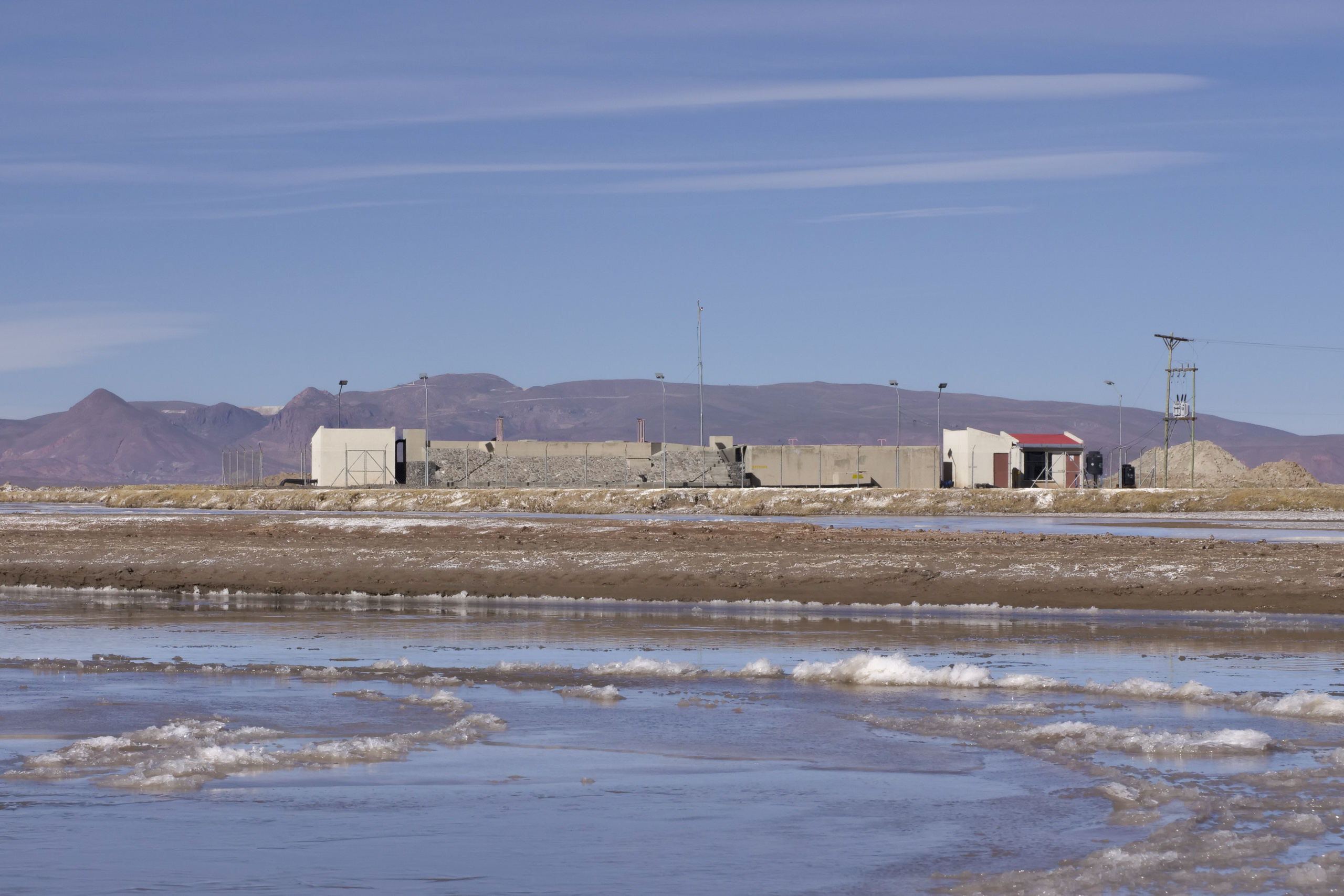

Big reserves, big challenges
Although foreign investment laws are different in the four countries, lithium development in Latin America is broadly in the hands of large transnational companies.
In Argentina, control over primary production and salt flats is in private hands, with American, French and Chinese companies among those participating alongside provincial governments, who collect taxes and royalties from their output.
The same is true of Peru’s nascent industry. Economy minister Alex Contreras told news outlet Swissinfo that his country’s openness to overseas participation is “total”. “Our objective is to attract investment in the different stages of the production process that we can be competitive in,” he said.
Bolivia, on the other hand, has long prioritised state control. However, after 15 years of unsuccessful efforts to industrialise the metal on its own, in 2022, the government opened up to investment. Lithium will remain Bolivian, but the Chinese and Russian corporations that have committed capital investment will receive “priority” treatment, Álvaro Arnez, vice-minister of alternative energies, told Bolivian television network Unitel.
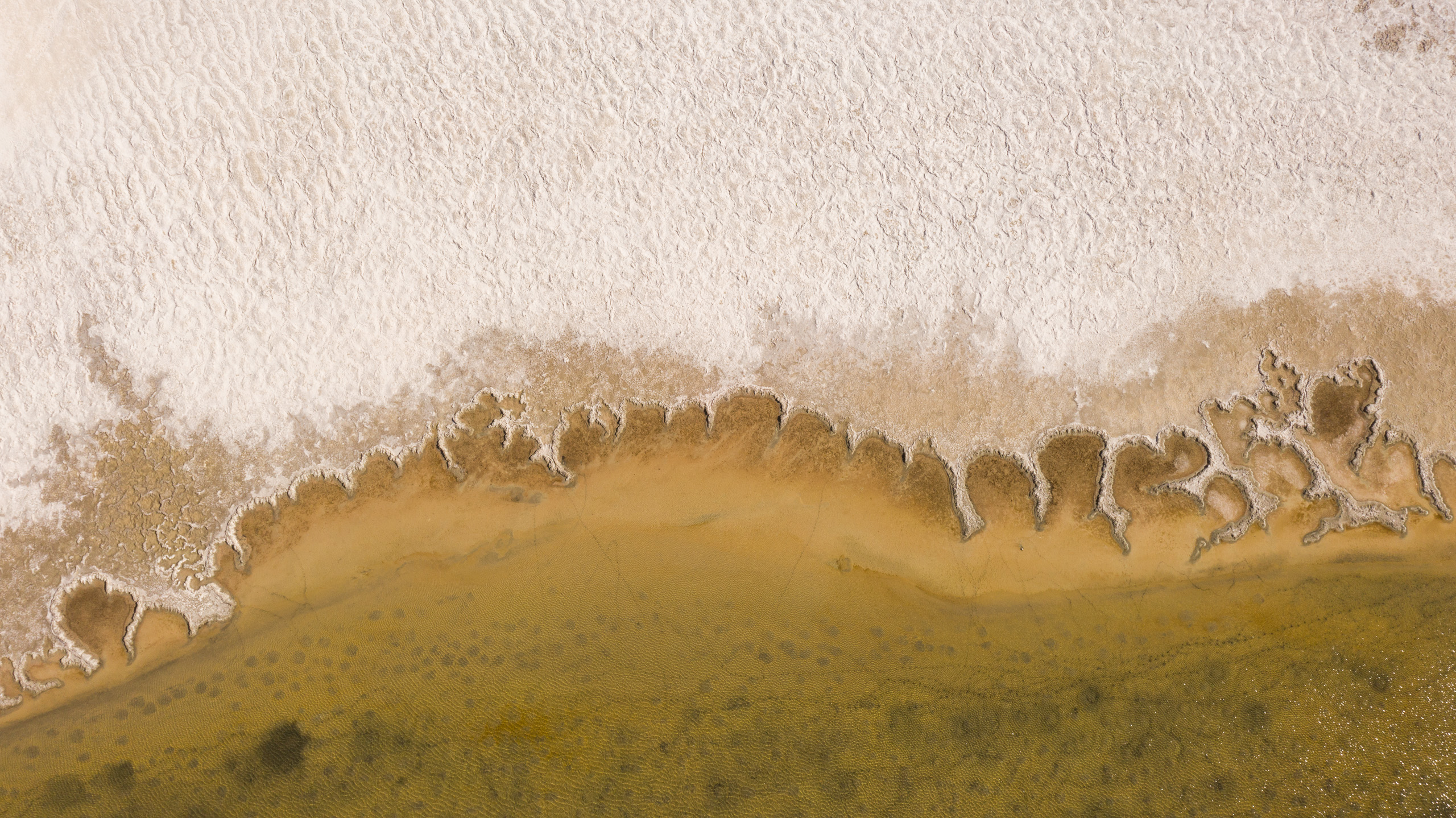
Meanwhile, in Chile, President Gabriel Boric submitted a bill to congress in April proposing the creation of the National Lithium Company, through which the state will seek to have a greater presence in exploration, exploitation and value-adding activities. Production is currently carried out by two private companies, Chilean SQM (a quarter of which is owned by Chinese Tianqi Lithium), and US-based Albemarle.
As the four countries look to expand their lithium activity with global demand projected to continue to rise, they do so in an ever-changing market, subject to fluctuations in prices. In 2022, a tonne of lithium carbonate cost US$80,000; however, in April this year, the price fell by almost 50% due to an increase in production and the slowdown in the sale of electric vehicles in China, among other factors.
Environmental impacts
Back at the Pastos Grandes salt flat in Bolivia, Marcial Muraña Ramos points to the horizon. “We have seen, both in Argentina and Chile, the consequences they have suffered in their salt flats, and we are running the same risk,” he says, alluding to issues such as community conflicts and impacts on water sources that have garnered attention near lithium production sites.
“Maybe in 10, 20 years, nothing will happen, but in 30 to 40 years, all this will be deserted,” he says.
The Mallku Villamar territory where Ramos resides contains fresh water that flows into the saline lagoon of Pastos Grandes, forming part of the Los Lípez wetland that is listed as internationally important under the Ramsar Convention. It describes Los Lípez as a complex of high Andean permanent saline, hypersaline and brackish lakes, as well as geothermal wetlands. Here, people make a living from raising llamas, farming at least four varieties of quinoa, and tourism associated with the area’s majestic landscapes.
Bárbara Jerez Henríquez, a researcher at the University of Valparaíso in Chile, told Diálogo Chino that research addressing the issue of lithium in environmental, social, cultural, archaeological and biological terms is “very limited”. She cited a study on lithium extraction and the rights of Indigenous peoples in Argentina, Bolivia and Chile, conducted by researchers from the Chilean NGO Citizens’ Rights Watch and the Business & Human Rights Resource Centre. This is despite the fact that salt flats are “dynamic and fragile natural ecosystems”, Jerez said.
For Jerez, it is undeniable that the environmental risks associated with the activity are high. One of them is the lack of understanding of the hydrology and biodiversity of the salt flats, she said. “What we have observed in the Salar de Atacama [in Chile] is that there is a profound water crisis due to the impact [of lithium extraction] on water reserves and biodiversity.”
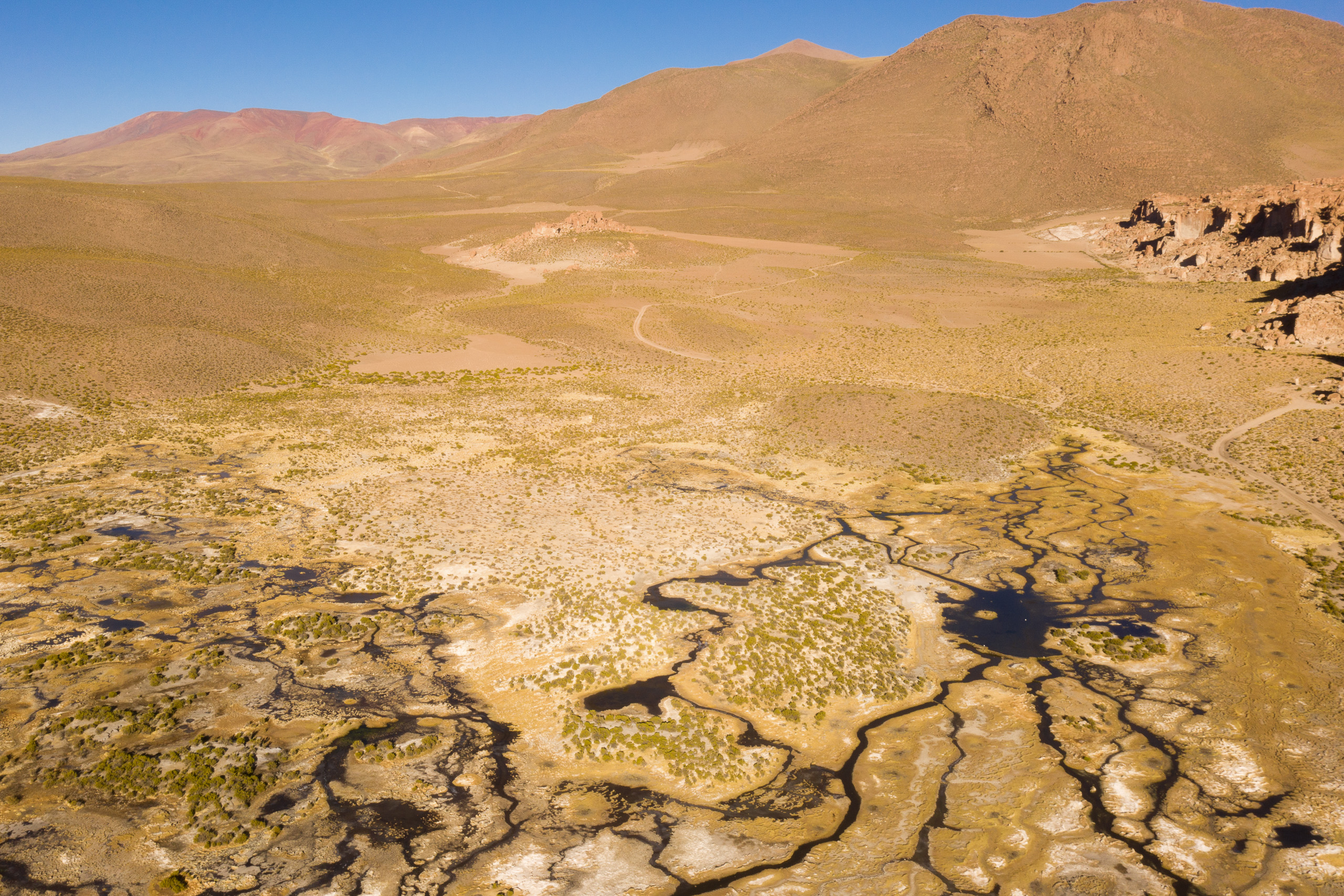
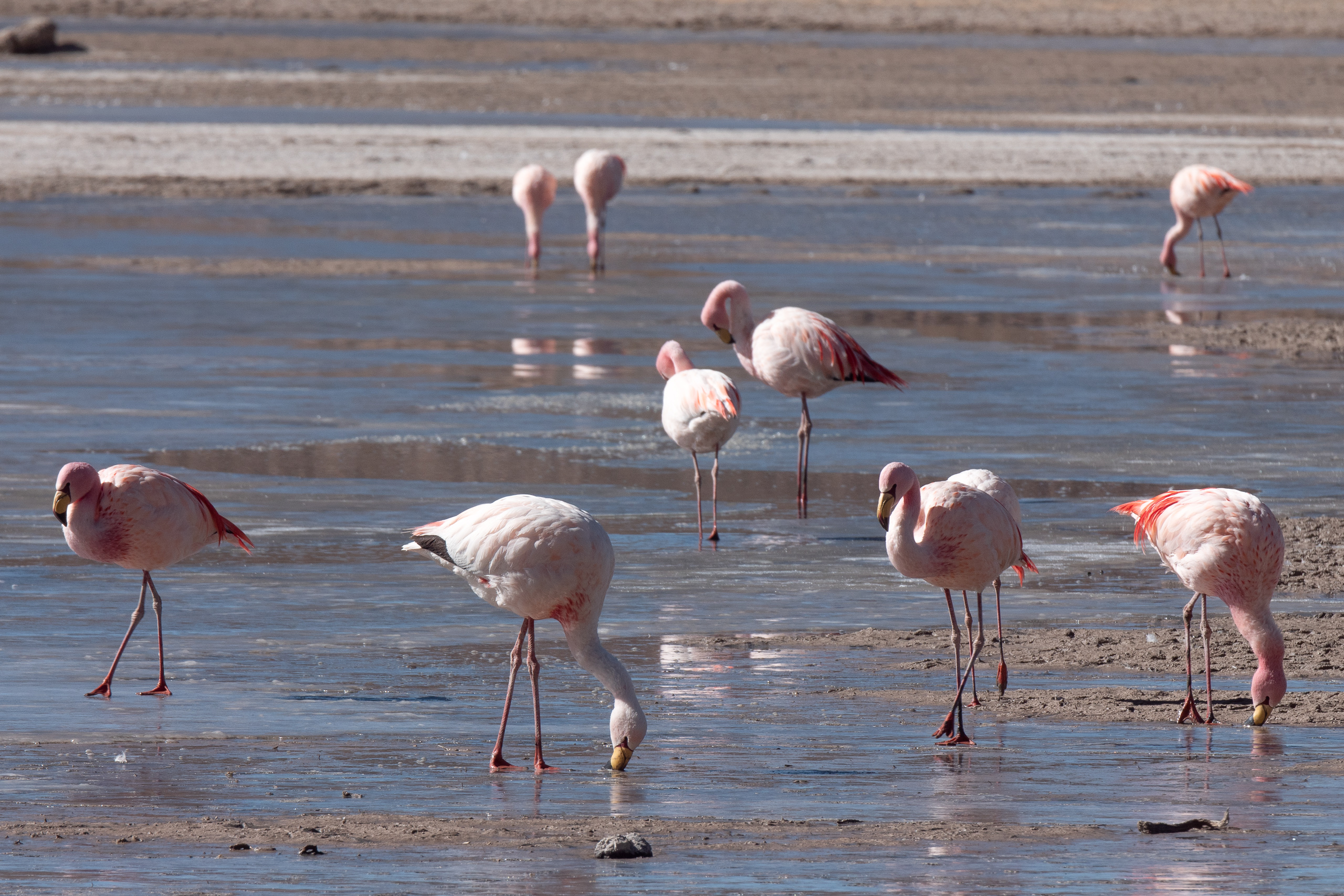
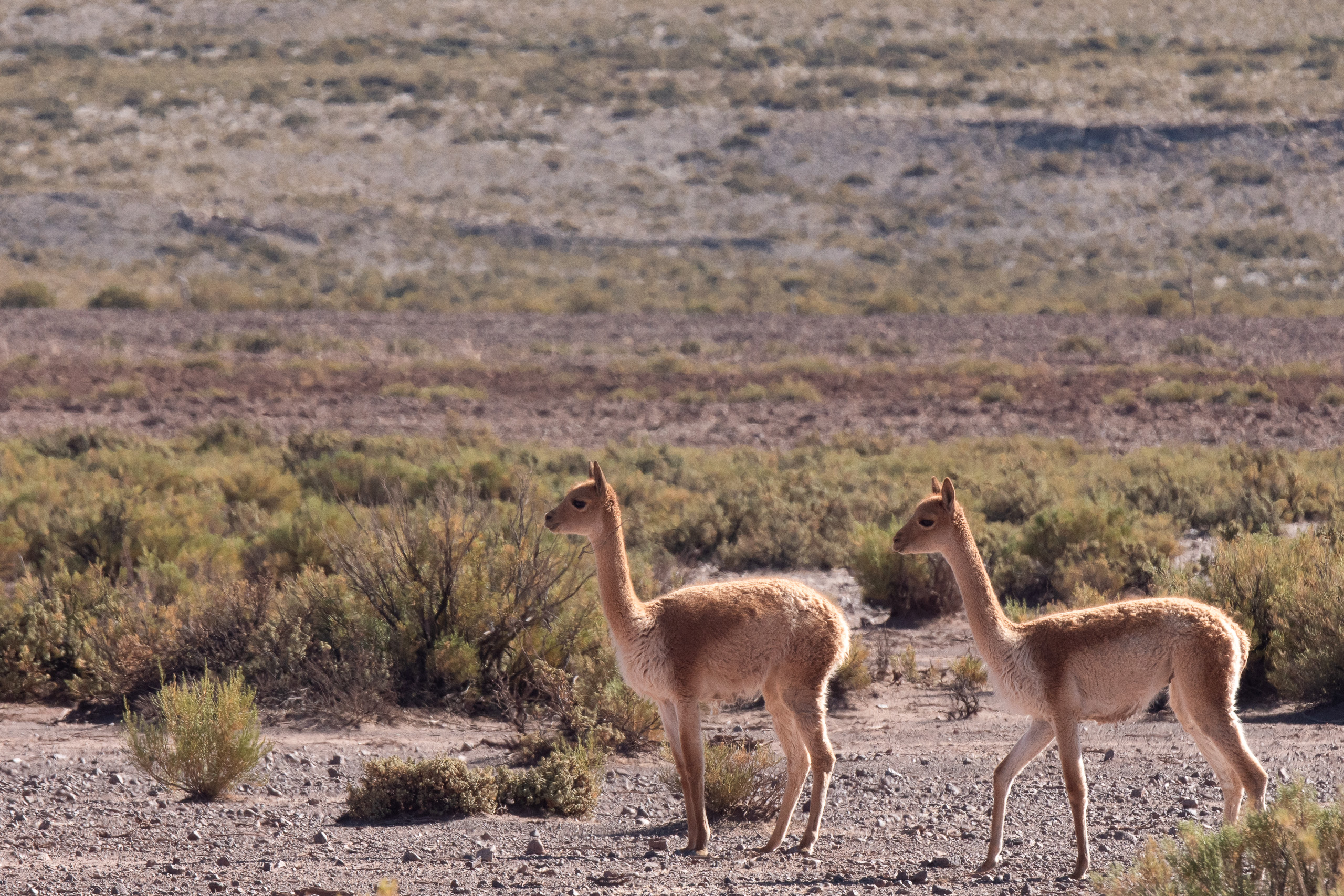
The dominant and most widely used extraction method in the lithium industry so far is evaporation, which involves the pumping vast quantities of brine per day. In this process, water is constantly extracted from the brine and evaporated in huge pools. The production of one tonne of lithium can require the evaporation of as much as 2 million litres of water.
Other methods exist, though some are still little explored at the industrial level. One is direct lithium extraction (DLE), a technology that allows extraction from reserves without the need to use evaporation pools. The brine is pumped to a processing plant where, through chemical processes, the mineral is extracted and the lithium-free brine is re-injected back underground. Different DLE methods and proposals exist, and each company can patent its own technology.
The Bolivian government has promoted DLE as being the “more environmentally friendly” of the two methods, and targeted its use in its industry. However, experts in the field, such as Gonzalo Mondaca, a researcher at the Bolivian Centre for Documentation and Information (CEDIB), warn that these technologies “can alter the entire hydro-geological system of the area”. This is due to the “high chemical development” used to separate the elements to obtain lithium carbonate.
Another issue is the uncertainty over what will be done with wastes left over from the process. In July, following the confirmation of Bolivia’s new investments, the then-president of YLB, Carlos Ramos, agreed to an interview with Diálogo Chino. But after learning of the potential topics to be discussed – including the handling of lithium wastes – the company’s communications department cancelled the interview, announcing that the president was travelling.
Edwin Ramos, leader of the Mallku Villamar community, said that in the coming months residents will meet with other Indigenous groups and leaders from communities in Argentina and Chile to discuss the environmental and social impacts of lithium mining. “We need to know what’s going to happen with all this,” Edwin says, as he points to the large wetland into which freshwater streams flow.
In Argentina, the issue of lithium provoked protests in Jujuy province in July, with several communities rejecting a controversial new provincial constitution that they argue seeks to increase lithium extraction on their territories. These groups claim they were not consulted by the government before the new document was drafted.
Across South America’s lithium-rich nations, concerns for what the future may hold are shared among Indigenous and local communities living close to salt flats. As governments sit on the cusp of a possible boom, and seek to boost their industries and exports amid growing demand for so-called “white gold”, these issues and conflicts will likely continue to surround projects – and require careful management.

